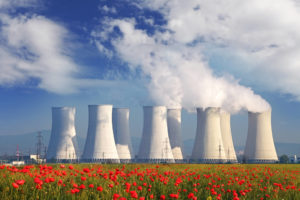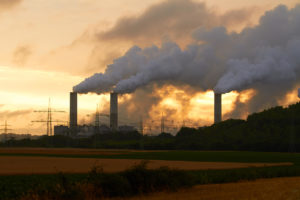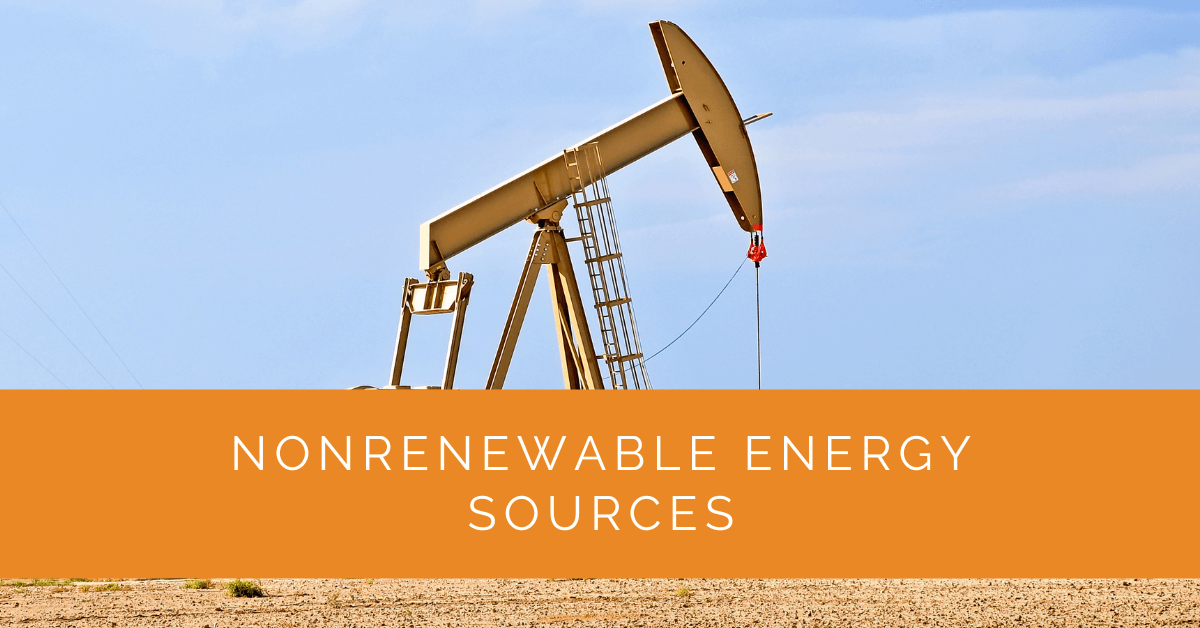In our modern world, energy sources are essential for various aspects of our daily lives. Understanding the difference between renewable and nonrenewable energy sources is crucial for making informed choices. This article focuses on nonrenewable energy sources and their impact on our environment and energy sustainability.
Contents
- 1 Key Takeaways
- 2 What are Nonrenewable Energy Sources?
- 3 Types of Nonrenewable Energy Sources
- 4 Other Nonrenewable Energy Sources
- 5 Comparing Nonrenewable and Renewable Energy Sources
- 6 Transitioning to Renewable Energy
- 7 Expert Insights From Our Solar Panel Installers About Understanding Nonrenewable Energy Sources
- 8 Conclusion
- 9 FAQ
Key Takeaways
- Nonrenewable energy sources, such as fossil fuels and nuclear energy, are finite resources that play a significant role in meeting our energy needs but come with environmental challenges and sustainability concerns.
- Fossil fuels, including coal, petroleum, and natural gas, have powered our world for centuries but contribute to greenhouse gas emissions and climate change. Nuclear energy offers advantages in energy density but poses challenges regarding radioactive waste disposal and safety.
- Transitioning to renewable energy sources, such as solar, wind, hydropower, and biomass, is crucial for a sustainable future. Embracing alternative energy options can reduce greenhouse gas emissions, enhance energy security, and promote a cleaner and healthier planet.
What are Nonrenewable Energy Sources?
Nonrenewable energy sources are natural resources that exist in limited quantities and cannot be replenished within a human timeframe. Unlike renewable energy sources, which are constantly replenished, nonrenewable sources take millions of years to form and cannot be replaced once depleted. These sources play a significant role in our energy consumption but have various drawbacks regarding environmental impact and long-term sustainability.
Types of Nonrenewable Energy Sources
Nonrenewable energy sources encompass various options, each with unique characteristics and implications. Let’s delve deeper into the different types of nonrenewable energy sources:
Fossil Fuels
Fossil fuels are our current energy landscape’s most prevalent nonrenewable energy sources. They are primarily composed of hydrocarbons and have been formed over millions of years from the remains of plants and animals. Fossil fuels include coal, petroleum, and natural gas.
Coal, a solid fossil fuel, has historically been a major energy source for electricity generation and industrial processes. It is abundantly available in many regions worldwide, and its combustion releases large amounts of carbon dioxide, contributing to greenhouse gas emissions.
Petroleum, also known as crude oil, is a liquid fossil fuel. It is a crucial energy source for transportation, powering vehicles, airplanes, and ships. Additionally, petroleum derivatives are vital in producing everyday products like plastics, fertilizers, and synthetic fabrics.
Natural gas, predominantly composed of methane, is a versatile fossil fuel for electricity generation, heating, and cooking. It burns more cleanly than coal and petroleum, emitting fewer carbon dioxide emissions per unit of energy produced. However, natural gas extraction, particularly through fracking, can have adverse environmental consequences, such as water contamination and methane leakage.
Nuclear Energy
Nuclear energy harnesses the immense power stored within the nucleus of an atom. It relies on nuclear fission, which involves splitting the nucleus of an atom to release energy. Uranium and plutonium are the most commonly used elements in nuclear power plants.
Nuclear power plants generate electricity by utilizing controlled nuclear reactions. The heat generated from nuclear fission is used to produce steam, which drives turbines connected to generators. Nuclear energy offers significant advantages regarding energy density and the absence of greenhouse gas emissions during operation. However, it raises concerns regarding the safe disposal of radioactive waste and the potential risks associated with accidents or the misuse of nuclear materials.

Other Nonrenewable Energy Sources
Apart from fossil fuels and nuclear energy, there are additional nonrenewable energy sources worth exploring:
Geothermal Energy
Geothermal energy harnesses the Earth’s internal heat to generate electricity. It relies on the natural heat stored beneath the Earth’s surface. This heat originates from various sources, including the residual heat from the planet’s formation and the radioactive decay of elements within the Earth’s core.
Geothermal power plants tap into this thermal energy by extracting steam or hot water from underground reservoirs. The steam drives turbines connected to generators, producing clean and sustainable electricity. While geothermal energy is technically classified as nonrenewable due to its reliance on heat sources that take millions of years to replenish, it holds significant potential for long-term sustainability and emits minimal greenhouse gases.
Other Nonrenewable Energy Sources
Additional nonrenewable energy sources include diesel, which powers many vehicles and industrial equipment, and petroleum products derived from crude oil. Diesel and petroleum products have been the backbone of transportation and various industries for decades, but their combustion releases greenhouse gases and contributes to air pollution. As we strive for a more sustainable future, exploring alternative energy sources and technologies becomes crucial to reduce our dependence on these nonrenewable resources.

Comparing Nonrenewable and Renewable Energy Sources
This table provides a concise and informative comparison between nonrenewable and renewable energy sources, highlighting their examples, availability, formation time, environmental impact, and sustainability. It showcases the fundamental differences between these two energy sources and underscores the importance of transitioning to renewable alternatives for a more sustainable future.
| Energy Sources | Nonrenewable | Renewable |
|---|---|---|
| Examples | Fossil Fuels (coal, petroleum, natural gas), Nuclear Energy | Solar Energy, Wind Energy, Hydropower, Biomass |
| Availability | Limited and Finite | Inexhaustible and Constantly Replenished |
| Formation Time | It takes millions of years | N/A (Immediate Availability for Use) |
| Environmental Impact | Greenhouse Gas Emissions, Air Pollution, Resource Depletion | Minimal Greenhouse Gas Emissions, Reduced Air Pollution, Sustainable Utilization |
| Sustainability | Not Sustainable in the Long Term | Sustainable and Can Meet Future Generations' Energy Needs |
Transitioning to Renewable Energy
Recognizing nonrenewable energy sources’ limitations and environmental impacts, transitioning to renewable energy is becoming increasingly important. Renewable energy sources offer cleaner and more sustainable alternatives that can help mitigate climate change and reduce our reliance on finite resources.
Renewable energy sources encompass various options, including solar, wind, hydropower, and biomass. Solar energy harnesses the sun’s power by converting sunlight into electricity through photovoltaic panels. Wind energy utilizes wind turbines to convert the kinetic energy of moving air into electrical power. Hydropower generates electricity by harnessing the energy of flowing or falling water, often by using dams or turbines. Biomass energy derives from organic matter such as wood pellets, agricultural residues, or dedicated energy crops.
Transitioning to renewable energy requires concerted efforts from governments, businesses, and individuals. Investing in renewable energy infrastructure, implementing supportive policies, and adopting energy-efficient practices can drive the shift toward a sustainable energy future. By embracing alternative energy sources, we can reduce greenhouse gas emissions, enhance energy security, and foster a cleaner and healthier planet for future generations.
Expert Insights From Our Solar Panel Installers About Understanding Nonrenewable Energy Sources
Nonrenewable energy sources, such as fossil fuels and nuclear energy, have been the backbone of our energy consumption for centuries. However, their environmental impact and finite nature highlight the urgent need for transitioning to renewable alternatives.
Senior Solar Engineer
Understanding the drawbacks of nonrenewable energy, like greenhouse gas emissions and resource depletion, is crucial for making informed choices. Embracing renewable energy sources can significantly mitigate these issues and promote sustainability.
Lead Solar Installer
Transitioning to renewable energy not only reduces our dependence on finite resources but also enhances energy security and creates a healthier environment. Solar power, in particular, offers a clean and abundant alternative.
Solar Energy Consultant
Conclusion
Nonrenewable energy sources have been the mainstay of global energy consumption for centuries. However, their limitations and environmental impact have become increasingly apparent. Understanding nonrenewable energy sources’ characteristics, advantages, and drawbacks is essential for making informed decisions about energy use. Transitioning to renewable energy sources offers a path toward a more sustainable future, where our energy needs are met without compromising the well-being of our planet. By embracing alternative energy sources, we can contribute to a cleaner, healthier, and more sustainable world for future generations.
Remember to explore renewable energy options, conserve energy daily, and actively support the transition to renewable sources. Together, we can create a greener future.
FAQ
What is a Nonrenewable Resource?
Nonrenewable is a natural resource that exists in limited quantities and cannot be replenished within a human timeframe. These resources take millions of years to form, including fossil fuels and nuclear materials.
What Are the Different Types of Nonrenewable Resources?
Nonrenewable resources encompass various types. The primary ones are fossil fuels like coal, petroleum, natural gas, and nuclear materials used in nuclear power generation.
How Do Nonrenewables Differ from Renewable Resources?
Nonrenewable resources have limited availability and take a long time to form. In contrast, renewable resources are constantly replenished and can be sustainably utilized without depleting their sources. Renewable resources include solar energy, wind power, hydropower, and biomass.
How Do Nonrenewable Resources Affect Climate Change?
Nonrenewable resources contribute significantly to climate change. The combustion of fossil fuels releases greenhouse gases, such as carbon dioxide, into the atmosphere, leading to global warming. Nuclear energy generation has no direct greenhouse gas emissions but poses risks related to waste disposal and accidents.
What Are Some Examples of Renewable Resources?
Renewable resources offer sustainable alternatives to nonrenewable sources. Some examples include solar energy, which harnesses sunlight to generate electricity; wind energy, which utilizes turbines to convert wind into power; hydropower, which utilizes the energy of flowing or falling water; and biomass energy, derived from organic matter such as wood pellets or agricultural residues.
About the Author
Solar Panels Network USA stands at the forefront of solar energy solutions, driven by a team of seasoned solar engineers and energy consultants. With over decades of experience in delivering high-quality solar installations and maintenance, we are committed to promoting sustainable energy through customer-centric, tailored solutions. Our articles reflect this commitment, crafted collaboratively by experts to provide accurate, up-to-date insights into solar technology, ensuring our readers are well-informed and empowered in their solar energy decisions.

